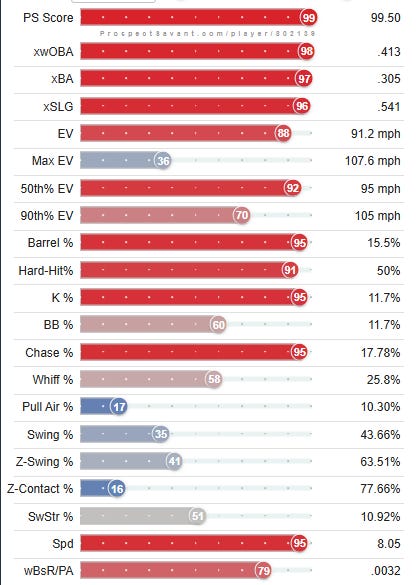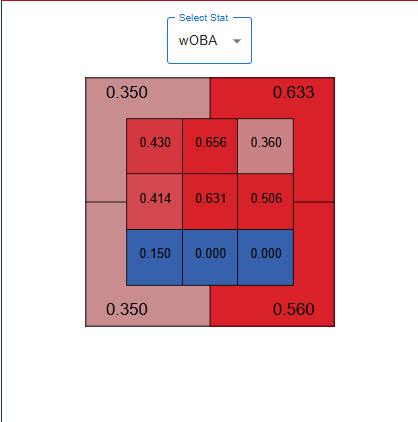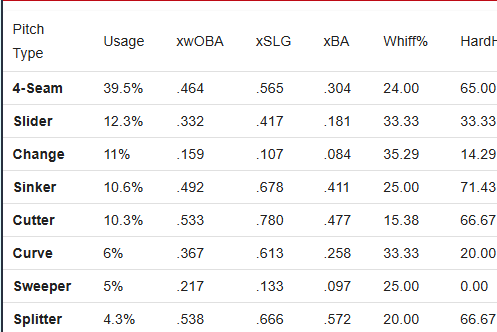JJ Wetherholt: The future of the St. Louis Cardinals.
The 7th overall pick in the 2024 draft is proving himself as one of the best pure hitters in the minor leagues.
Polished far before making his professional debut.
Wetherholt was always considered as one of the best pure hitters of his draft class. He, quite literally, was the best hitter in the country. Through 55 games for West Virginia, Wetherholt had a .449/.517/.787 slash line and 1.304 OPS, hit 16 home runs and stole 36 bases. He showed an ability to hit the ball to all fields with excellent bat-to-ball skills, and he was rising up draft boards.
Before the draft, Wetherholt played 36 games to a .331/.472/.589 slash line, hit eight home runs and stole six bases, boasting a ridiculous 18.3% BB% and 10.3% K%. Purely based on his profile, Wetherholt had the potential to go as the number one pick, but two hamstring injuries tainted his profile, as these are often recurring injuries that can impact speed and mobility. Wetherholt’s profile was more than just his bat: He was considered an above-average runner and defender with an average arm, and multiple hamstring injuries could heavily impact some of these tools.
This gave the Cardinals the chance to pick Wetherholt as the 7th overall pick, despite most publications ranking him in the Top 5.
And it could turn out to be a franchise-altering pick.
First impressions last.
Wetherholt made his professional debut after the draft, playing 29 games at Single-A to a .295/.405/.400 slash line and .805 OPS, with two home runs and two stolen bases. It was a solid debut, but the lack of power (7 total extra-base hits) and little to no baserunning made it a debut that just went under the radar of most. Not because it was bad, but it wasn’t the JJ Weterholt we saw in his time at Virginia.
But the underlying metrics were already pointing upwards:
He walked more than he struck out. (12.7% BB% v 11.9% K%)
Registered a 54.9% Hard-Hit%.
90th EV of 105.9 MPH.
Performed well against all three pitch types.
A 6.7% SwStr% and 83.8% Contact% are absolutely elite.
Despite the little power and speed output, Wetherholt’s underlying metrics suggested that an improved season was highly likely in 2025. It’s not unreasonable to believe that Wetherholt’s running game was halted to avoid any new lower-half injuries, which could hamper the rest of his development in the long term. The main goal for Wetherholt was to stay healthy, which he succeeded at for the rest of his 2024 campaign.
Polished: Plus power and diamond discipline.
Entering 2025, expectations were still high around Wetherholt. He skipped High-A entirely and made his season debut at Double-A, which was a bold move at the time. After all, he struggled to develop any real in-game power two levels lower.
But Wetherholt blew everyone away. He played 62 games to a .300/.425/.466 slash line, hit seven home runs and stole 16 bases. The in-game power output had improved already, with 14 doubles and a triple added onto his extra-base hit total. Most impressive was how he handed the increased level of competition:
He increased his BB% from 12.7% at Single-A to 16% at Double-A.
His BB/K rate of 1.10 is elite. Him and William Bergolla (CWS) were the only prospects 22 or younger with a BB/K rate over 1. Bergolla had a .342 SLG%, Wetherholt’s was .466.
His .300 BA was 3rd among qualified hitters 22 or younger.
His 6.5% SwStr% was a small decrease compared to his Single-A stint.
His 84.1% Contact% was a small increase compared to his Single-A stint.
This impressed everyone, including the Cardinals Player Development, and this eventually resulted in a well-deserved mid-season promotion to Triple-A. This would undoubtedly be a challenge for Wetherholt - he was in college ball a little over a year before the day of his promotion to Triple-A!
But the extremely well-rounded Wetherholt has taken it up another notch.
Triple-A: Wetherholt leads the way.
Through his first 17 Triple-A games, Wetherholt has a .323/.403/.708 slash line and 1.111 OPS, with six home runs, five doubles, a triple and two stolen bases. The power output that we were expecting is on full display now, and he combines this with fantastic plate discipline.
Some of his most standout metrics show just how elite his process at the plate is:
15.5% Barrel% (93rd percentile)
50% Hard-Hit% (88th percentile)
105 MPH 90th EV (70th percentile)
95 MPH 50th EV (91st percentile)
11.7% K% (93rd percentile)
11.7% BB% (60th percentile)
17.8% Chase% (95th percentile)
25.8% Whiff% (58th percentile)
He’s hitting the ball extremely hard, but pairs this with elite chase rates and above-average whiff rates. What further stands out are his heatmaps: Wetherholt gets results from all places in the zone, even managing solid results when he does chase. Note that the bottom part of the zone could simply be an anomaly simply because of the little events that are registered through 17 games.
However, it’s crucial to stay realistic when analysing a prospect. It’s highly unlikely any prospect comes with no flaws, as this is a natural part of developing into a big-league hitter.
Polished, but not perfect.
There are some (slight) worries when looking at this first batch of Triple-A numbers.
77.6% Z-Contact% ranks in the 16th percentile.
10.3% PullAIR% puts a lot of pressure on his power output to all fields.
10.92% SwStr% is right around league-average, but a 4% increase compared to his time at Double-A.
An xBA of .181, .084 and .097 on slides, changeups and sweeper.
Increased Whiff% on breaking pitches, surpassing 30% on changeup and slider.
However, these numbers are highly variable at this moment in time, considering some pitches have been thrown less than 10 times over the course of this 17-game stretch. Wetherholt has further been known for his excellent bat-to-ball and pitch recognition skills, which are likely to have a positive impact on his numbers against the various pitch types and his ability to make contact in-zone.
However, the PullAIR% has become an increasingly important metric over the last few seasons, fuelling breakout seasons from the likes of Pete-Crow Armstrong and Ceddanne Rafaela, allowing players with above-average but not elite power to deliver elite power output in-game. Although Wetherholt’s hit tool alone is likely superior to those two players, it will be interesting to see how his power plays once he makes the move to the Major League level.
What the future holds.
It’s highly likely Wetherholt is going to get the call from the moment we’re past August 15th. From this date onwards, no called up player can get service time to be ineligble for next year’s Rookie Of The Year Award - an award Wetherholt could most definitely contend for.
With an aging Nolan Arenado and Masyn Winn taking huge strides in his defensive contributions as a shortstop, it’s highly likely Wetherholt ends up at either second or third base, depending on potential injuries and positional rotations. Wetherholt’s profile is one that carries over across levels extremely well, as proven by his smooth rise to Triple-A in less than a year.
Overall, Wetherholt is one of the most polished, all-round prospects in baseball that could easily deliver a .285 BA/.400 OBP season with 25 HR & 25 SB at peak.
Thank you for reading.
Louis





